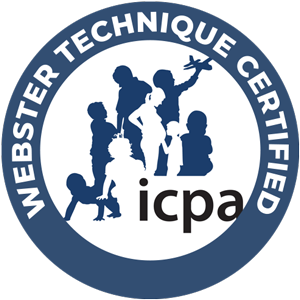4 Clear Signs You Should See A Chiropractor For Lower Back Pain

If you’re experiencing lower back pain, here are four clear signs that you should see a chiropractor. Persistent pain lasting more than a week indicates it’s time for professional help. Limited mobility, such as struggling with daily activities due to back stiffness or a restricted range of motion, suggests a need for chiropractic assistance. Pain following an injury, like an accident, requires immediate chiropractic care to prevent further complications. Lastly, if your pain radiates to your legs or other areas, it could indicate a serious issue that warrants chiropractic attention.
Understanding Lower Back Pain
Have you ever felt that nagging ache in your lower back that just won’t quit? You’re not alone. Lower back pain is a prevalent problem that affects millions of people worldwide. It can range from a dull, constant ache to a sudden, sharp sensation that leaves you incapacitated.
Let’s break it down:
- Acute pain: Lasts for a few days to a few weeks
- Chronic pain: Persists for more than 12 weeks
Common causes of lower back pain include:
- Muscle strains
- Herniated discs
- Arthritis
- Poor posture
- Sports injuries
While occasional back pain might not seem like a big deal, chronic or severe pain can significantly impact your quality of life. That’s where chiropractic care comes in.
The Chiropractic Approach to Lower Back Pain
Chiropractors are like the superheroes of the spine world. They use a hands-on approach to diagnose, treat, and prevent mechanical disorders of the musculoskeletal system, particularly the spine. Their goal? To get you back on your feet and living your best life, pain-free!
Here’s what makes chiropractic care stand out:
- Conservative treatment: No surgery required
- Drug-free therapy: Say goodbye to those pesky side effects
- Personalized care: Tailored to your specific needs
Chiropractic care offers a refreshing alternative to traditional medical treatments, especially when it comes to managing lower back pain. Unlike the potentially addictive opioids often prescribed for back pain, chiropractic adjustments provide a natural, drug-free path to relief.
4 Clear Signs You Need to See a Chiropractor
Now, let’s get to the heart of the matter. How do you know when it’s time to seek the help of a chiropractor? Here are four telltale signs:
1. Chronic or Recurring Pain
If your back pain has been hanging around like an unwelcome houseguest for more than a few days or weeks, it’s time to show it the door. Persistent pain could indicate an underlying issue that needs professional attention.
Red flags:
- Pain lasting more than 6-8 weeks
- Pain that comes and goes but never fully resolves
- Pain that interferes with your daily activities or sleep
2. Limited Mobility
Are you finding it harder to bend, twist, or move around like you used to? Limited range of motion in your back or neck could be a sign of spinal misalignment or muscle imbalances.
Watch out for:
- Difficulty turning your head
- Stiffness when bending or twisting
- Trouble performing everyday tasks due to back pain
3. Unexplained Postural Changes
Have you noticed changes in your posture? Maybe your shoulders are hunched, or you’re leaning to one side. These changes could be your body’s way of compensating for spinal misalignment.
Look for:
- Uneven shoulders
- One hip higher than the other
- Difficulty standing up straight
4. Radiating Pain or Numbness
If you’re experiencing pain, numbness, or tingling sensations that radiate from your back into your legs or arms, it could be a sign of a pinched nerve or sciatica.
Be aware of:
- Sharp, shooting pain down your leg (sciatica)
- Numbness or tingling in your arms or legs
- Weakness in your extremities
Conditions Treated by Chiropractors
Chiropractors aren’t just back pain specialists. They’re trained to identify and treat a wide range of musculoskeletal issues. Here’s a quick rundown of some conditions that chiropractic care can address:
- Low back pain: This is the bread and butter of chiropractic care. Chiropractors excel at treating lower back pain through spinal adjustments and other techniques.
- Neck pain: Whether it’s from poor posture, whiplash, or just sleeping funny, chiropractors can help ease that crick in your neck.
- Headaches: Many headaches, especially tension headaches, are related to neck stiffness and muscle tightness. Chiropractic care can help alleviate these issues.
- Muscle and joint pain: From carpal tunnel syndrome to tennis elbow, chiropractors can treat pain and discomfort in various parts of the body.
The Benefits of Chiropractic Care
When you visit a chiropractor, you’re not just getting a quick fix for your pain. You’re investing in your overall health and well-being. Here are some of the benefits you can expect:
- Pain relief: Through spinal adjustments and other techniques, chiropractors can help reduce pain and improve function.
- Improved posture: By realigning your spine, chiropractors can help correct poor posture and prevent future issues.
- Enhanced range of motion: Chiropractic care can help increase flexibility and improve your overall mobility.
- Better sleep: By reducing pain and promoting relaxation, chiropractic care can lead to improved sleep quality.
- Boost in overall health: A properly aligned spine can contribute to better overall health and function of your body’s systems.
Personalized Chiropractic Care
One size doesn’t fit all when it comes to chiropractic care. Your chiropractor will develop a personalized treatment plan based on your specific needs and symptoms. This may include:
- Spinal adjustments: The cornerstone of chiropractic care, these gentle manipulations help realign your spine.
- Soft tissue therapy: Techniques like massage to address muscle tension and promote healing.
- Exercise recommendations: Specific exercises to strengthen your core and improve flexibility.
- Lifestyle advice: Tips on ergonomics, posture, and daily habits to support your spinal health.
Remember, chiropractic care is all about addressing the root cause of your pain, not just masking the symptoms. It’s a drug-free approach that focuses on helping your body heal itself.
Success Stories
Don’t just take our word for it. Let’s look at some real-life examples of how chiropractic care has helped people overcome their lower back pain:
- Emily, 35: After months of chronic lower back pain that made it difficult to play with her kids, Sarah sought chiropractic care. Within a few weeks of regular adjustments and exercises, she was back to running around the park with her children, pain-free.
- Robert, 52: A former athlete, Mark had been dealing with recurring back pain for years. After trying various treatments with little success, he turned to chiropractic care. Through a combination of adjustments and lifestyle changes, Mark was able to return to his favorite sports and even completed a marathon.
- Lisa, 28: As an office worker, Lisa’s poor posture led to severe lower back pain. Her chiropractor not only provided adjustments but also gave her ergonomic advice for her workspace. Within a month, her pain had significantly decreased, and she noticed improvements in her posture.
These stories highlight the transformative power of chiropractic care. It’s not just about managing pain; it’s about improving quality of life and helping people get back to doing the things they love.
Lifestyle Tips for Back Health
While chiropractic care can work wonders for your back pain, maintaining good spinal health is a team effort. Here are some tips to keep your back in top shape:
- Practice good posture: Whether you’re sitting, standing, or lying down, maintaining good posture is crucial for spinal health.
- Exercise regularly: Focus on exercises that strengthen your core muscles and improve flexibility.
- Lift properly: Always bend at the knees and keep the object close to your body when lifting heavy items.
- Stay hydrated: Drinking plenty of water helps keep your spinal discs hydrated and healthy.
- Get enough sleep: Use a supportive mattress and pillow to maintain proper spinal alignment while you sleep.
- Manage stress: High stress levels can lead to muscle tension and pain. Practice relaxation techniques like deep breathing or meditation.
Remember, these tips work best when combined with regular chiropractic care. Your chiropractor can provide more personalized advice based on your specific needs and lifestyle.
A Reminder: Whole Body Wellness As we wrap up, it’s important to remember that chiropractic care isn’t just about treating back pain—it’s about promoting whole body wellness. Your spine is the highway for your nervous system, which controls every function in your body. By keeping your spine healthy and properly aligned, you’re supporting your overall health and well-being.
So, if you’re experiencing any of the four signs we discussed—chronic pain, limited mobility, postural changes, or radiating pain—don’t wait. Seek the help of a chiropractor. Your back (and your whole body) will thank you!
Remember, your health is your most valuable asset. Invest in it wisely, and you’ll reap the rewards for years to come. Here’s to a healthier, pain-free you!
Frequently Asked Questions
When should I see a chiropractor for lower back pain?
- Persistent Pain: If your lower back pain persists for more than a few days or weeks despite self-care measures.
- Pain with Movement: When your pain worsens with specific movements or activities.
- Chronic Pain: For chronic pain that has lasted more than three months.
- Restricted Mobility: If you experience stiffness or restricted range of motion.
- Sciatica: Pain that radiates down the leg, which may indicate a pinched nerve.
- Post-Injury: After a fall, accident, or other injuries that may affect your back.
- Recurring Pain: If you have recurrent episodes of back pain.
- Alternative to Surgery: If you’re considering alternatives to surgery or medication.
How do I know if my lower back pain is muscle or spine?
- Muscle Pain:
- Localized Pain: Often felt in a specific area and may be tender to the touch.
- Stiffness: Muscular pain can cause stiffness and decreased range of motion.
- Relief with Rest: Generally improves with rest, heat, or massage.
- Post-Exercise: Often occurs after physical activity or overexertion.
Spinal Pain:
-
- Radiating Pain: Pain that radiates down the leg (sciatica) or up the back.
- Numbness/Tingling: Accompanied by numbness, tingling, or weakness in the legs.
- No Relief with Rest: May not improve with rest and could worsen.
- Positional Changes: Pain may worsen or improve with changes in posture or specific movements.
- Chronic Pain: Lasting for an extended period and not related to physical activity.
What is the best chiropractic technique for lower back pain?
The best chiropractic technique depends on the individual case, but some commonly used and effective techniques include:
- Spinal Manipulation (Adjustments): The most common chiropractic treatment involving controlled force applied to the spine to improve alignment and mobility.
- Flexion-Distraction: A gentle, non-thrusting technique using a specialized table to stretch the spine and relieve pressure on spinal discs.
- Activator Technique: Uses a small, handheld device to deliver a gentle impulse force to the spine, suitable for patients needing a gentler approach.
- Drop Table Technique: Utilizes a special table with sections that drop to provide a gentle adjustment, often used for the pelvic and lumbar areas.
- Gonstead Technique: Focuses on detailed analysis of spinal x-rays and precise adjustments to specific areas of the spine.
- Thompson Technique: Similar to the drop table technique, it uses a specialized table and precise adjustments to improve spinal alignment.




